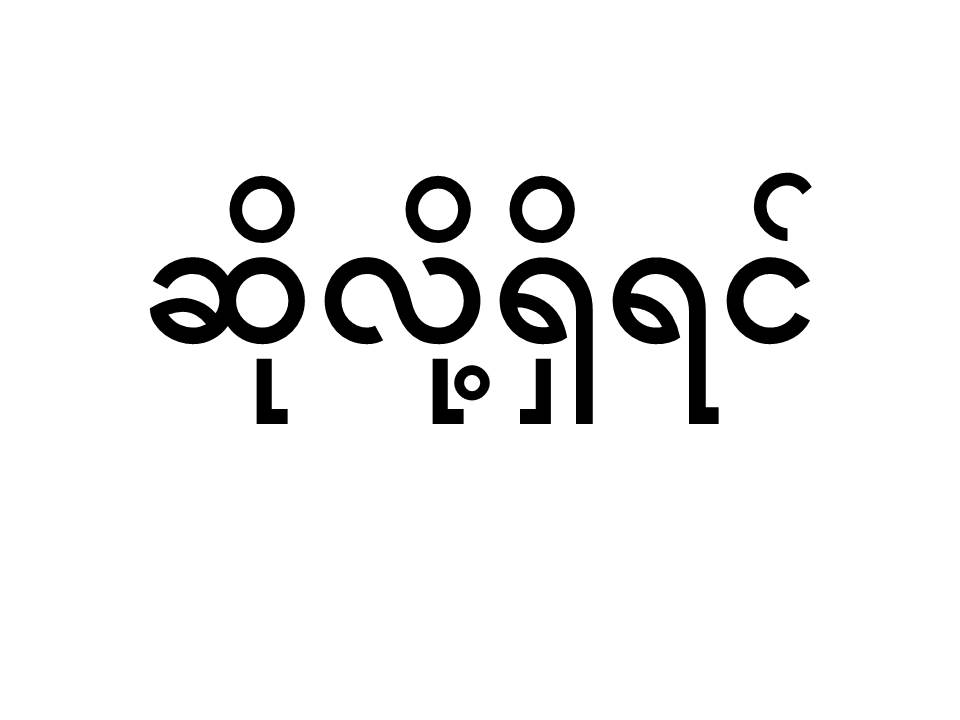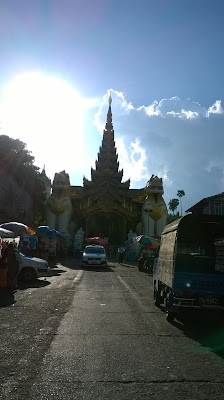Sunday, November 13, 2016
The Rhythmic Resilience: Exploring the Myanmar Pop Music Landscape
The Rhythmic Resilience: Exploring the Myanmar Pop Music Landscape
I am sure you would agree with me that music is a universal language, a reflection of a nation's soul and its turbulent history. As an assistant professor of ELT at the International College, Dhurakij Pundit University in Bangkok, Thailand, I notice the vibrant exchange of culture across Southeast Asia, and few nations offer a more complex and fascinating musical narrative than Myanmar.
First of all, to appreciate the Myanmar pop music landscape, we must understand the historical backdrop. It is well known that for decades, the country was under strict military rule, which profoundly impacted every facet of cultural expression, including music. Those were the days when everything was simple, but also when everything was scrutinized. Experts say that popular music, often referred to as "stereo" music in Myanmar (to distinguish it from traditional "mono" music), was heavily influenced by Western pop and rock starting from the 1960s and 70s.
The Phenomenon of Copy Thachin
Let me introduce you to the notion of 'Copy Thachin'—a term fundamental to understanding this landscape. One may ask what "Copy Thachin" is. Basically, it refers to Burmese pop songs that borrow the melody of an existing international hit (often Anglo-American, but also Thai, Indian, or Korean) and set it to new lyrics in the Burmese language. I think this phenomenon is a fascinating case study in cultural adaptation and resilience under censorship.
Critics such as those concerned with intellectual property would tell you that it is all about plagiarism. However challenging, I determine to make it clear that the emergence of Copy Thachin is not just about a lack of originality; it is an economic and political product of its time. I’d like to entertain you with the idea that during the military regime, with strict censorship from the Press Scrutiny Board, it was incredibly difficult and risky for artists to produce original music that might inadvertently contain subversive messages.
As we know, producing original music requires access to modern equipment and professional training, which were scarce due to economic isolation and bans on foreign imports. Accordingly, adopting a proven international melody minimized the creative risk, allowing musicians to focus on Burmese lyrics that, if cleared by the censors, could still resonate with the public. My conviction is that this practice allowed the industry to survive and popular music to flourish, even if in a derivative form. They say that Copy Thachin helped local artists learn about global popular music, laying a foundation for future original compositions.
A Shifting Sonic Palette
Nevertheless, it is my long-held belief that (though I could be wrong) the music landscape has gradually moved towards greater originality, particularly with the easing of censorship in the early 2010s. The news has it that in October 2012, the cessation of the censorship of audio recordings was a powerful symbol of commitment to artistic freedom.
The past is the past. Like it or not, the world moves on. Gradually, I observed the rise of genres like Hip-Hop and Rock, which offered new avenues for authentic self-expression.
Fundamentally, it is all about the youth expressing themselves. Hip-hop, in particular, became the prevailing genre among young people. Artists like Sai Sai Kham Leng and J-me brought in the rhythms and aesthetics of American rap and hip-hop culture, talking about social issues, personal struggles, and urban life.
Globally, the internet and social media have been game-changers. What we all know and agree upon is that digital proliferation made it much easier for artists to create, distribute, and promote their music, bypassing traditional, often state-controlled, media channels.
Music as a Voice of Resistance
What's more interesting is that, in the face of political upheaval, music in Myanmar has powerfully reasserted its role as a voice of resistance. The 2021 military coup sparked a creative explosion of "revolutionary songs." My gut tells me that for a generation that had tasted a degree of freedom, music became an indispensable tool for non-violent resistance.
These anti-coup songs, circulated widely on social media, often reference deep-seated Burmese tropes and historical events to advocate for democracy and unity. It has perplexed me to see how quickly artists mobilized, turning their creative energy into anthems for the protest movement. Indeed, hip-hop groups like Rap Against Junta have used their sharp, politically charged lyrics to speak out against military oppression, serving as an inspiration for many.
Some argue for the idea that such politically charged music is ephemeral, a product of a specific moment. Some argue against this, suggesting that these songs will become indelible parts of the nation's contemporary history. I think the latter holds more weight; this music is documenting history in real-time.
Looking Ahead
As a language teacher, I often see how language and culture are intertwined. The evolution of Burmese pop music, from the constrained creativity of Copy Thachin to the raw political passion of revolutionary rap, mirrors the country's own struggle for self-definition.
Make no mistake, the challenges for the music industry remain significant, particularly regarding infrastructure, piracy, and ongoing political instability. Yet, the talent is undeniable.
I know you would agree with me that the resilience and creative spirit of Myanmar's musicians will continue to shape the sound of their nation. No one knows everything, but I would like to conclude by saying that the Myanmar pop music landscape is a living, breathing testament to the power of art to endure, adapt, and ultimately, speak truth to power. Fundamentally, I would argue that the future of Burmese pop music lies in the hands of a generation determined to sing its own song, both literally and figuratively.
Friday, November 11, 2016
Thursday, November 10, 2016
ASEAN and the Trump Administration
Janpha Thadphoothon
Under the Trump administration, the US is more likely to focus its development energy on its internal affairs, industries, and issues. Its policy might be directed in ways that might threaten outsiders and some US citizens. It is expected that the US is protecting the businesses and industries. It will be creating stable and decent jobs for Americans. In Trump's words" Making America great again."
This inward-looking policy is rare and seems unprecedented. Critics fear negative consequences. In fact, there are both advantages and disadvantages the world, including for ASEAN.
On the plus side, the focus of the US policy tends to favor economic development and cooperation. Like most entrepreneurs, Donald Trump loves economic growth and startups. There will be more economic ties, joint ventures, etc. There are going to be more business exchanges between the US and ASEAN. The new president may try to ease military crises and turn those into opportunities.
On the minus side, the US market will be tougher to penetrate. Exports from ASEAN states to the US market may be severely affected, as the US is going to make it tougher for foreign products to enter the US market.It also seems that US aid and US military presence around the world will be altered.
Border protection and internal security will be upgraded.
ASEAN will have to adjust itself to this new reality.
We have to wait and see.
Monday, October 31, 2016
Expression 'So Lou Shin Yin' in Myanmar
How to use "Soe Lou Shi Yin" or "Concerning this...
As seen from the above examples:
1. The 'expression' needs to have at least one 'precedent unit', It needs to be preceded by a topic or subject. For example, di coffee solushi yin, .... Concerning this coffee...
2. It cannot be used to begin a clause or sentence.
3. It is found in both the spoken and written formats or registers.
Thursday, October 27, 2016
Expression "Concerning..." in the Myanmar Language
The position of this expression is right after the conjunction 'and'
Below are the examples taken from many websites, most of them are from the government websites.
Based on the four examples, we can see two patterns.
1. That the expression is often used in the formal context.
2. It appears after the word 'ning' or 'and '.
3. It is not used to begin a sentence.
Wednesday, October 19, 2016
How to Use Adverbs that Mean "Very" in the Myanmar Language
Adverb "Very" in Myanmar
Janpha ThadphoothonFor a new beginner who is interested in learning to read and speak Myanmar, knowing how to use an adverb is an important step in his or her language acquisition.
One usage has captured my attention and I would like to share it with other learners. This is the use of an adverb to denote or signify a degree of a verb or adjective.
In English, we say 'very beautiful ' or 'very hot'. We know that the adverb 'very' is placed in front of the word it describes.
In Thai, you would put an adverb after the verb or adjective. For example, when you say 'very hot' you would say ร้อนมาก or Ron Mak - where 'mak' is an adverb meaning very. It would be' hot very.
In Myanmar, however, the adverb is placed in front of an adjective or a verb.
Examples:
1.
- In the above example, the adverb thiek means 'very' and the adjective 'poo' means 'hot'
As you can see the adverb is right in front of the word it describes - in this case an adjective.
Please not that the adverb thiek is informal.
2.
Similar to the above example, the word /aluan/ means very in English. In fact, /aluan/ is formal and often appears in the media and textbooks.
3.
Another commonly found adverb 'very' in Myanmar is /ayaan / which also means 'very'.
Example
/ Ayaam / here means 'very' It is put in front of an adjective /A/ which means cold.
In the above example, the adverb /ayaam/ modifies a verb /maung/ or drive
Tuesday, October 18, 2016
Similes in Myanmar
Similes in Myanmar
Janpha ThadphoothonA simile is a figure of speech. We use it to compare two things or persons which share similar qualities or characteristics. In English, a simile is usually found in a phrase that begins with "as" or "like."
Ex. As big as an elephant = very big
Similes are interesting language use. They reflect not only cultural values, but creativity as well.
In this article, I shall introduce you to some of the common ways to compare things or persons in the Myanmar language.
1. Use ကဲ့သို့ /kaetoh/ which means like or as
O ကဲ့သို့ လုံး ဝန်းသော - round like an O
ကလေး ကဲ့သို့ like children
ကလေး ကဲ့သို့ မကစားကြဘူး
Don't play like children.
အိမ် ကဲ့သို့ သော နေရာမျိုး မရှိပါ။
There's no place like home.
သူကြိုးစား သကဲ့သို့ ကျွန်တော်ကြိုးစားသည်။
I try as his or hers.
2. Use တူသည် /tothee/ which means 'look like'
လေးကိုင်း တစ်ခု နှင့် သဏ္ဍာန် တူသည်
shaped like a bow
3. Use လို /loo/
Ex. သူလိုလူ /too lo loo' A person like him or her
4. Use အတိုင်း /ataine:/ means 'as'
အတိုင်း is a word occuring between nouns to establish a simile -- like or as
For example
ပြောတဲ့ အတိုင်း လုပ်ပါ။ Please do as you say. (Stick to your words)
အစ်တိုကြီး အတိုင်း ညီလေးတို့တော်အောင်လုပ်ကြ။
5. Use / သလို /thalo/
Example
မီးပူ သလို like an iron
ပြော သလို လုပ် Do as you have said.
6. Use သလောက် /thalauk/ as.....as
လှ သလောက် မာနကြီး
as beautiful as pride
















